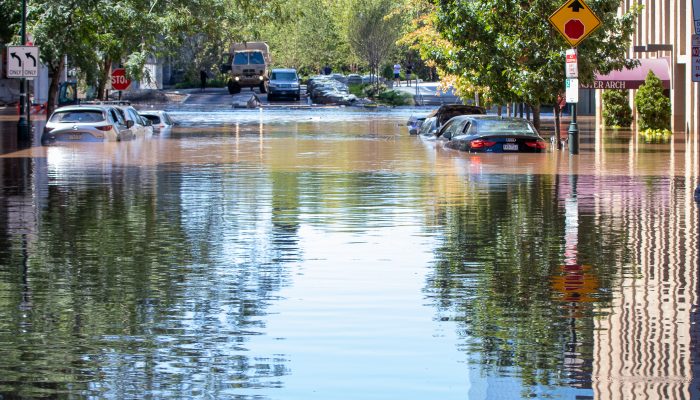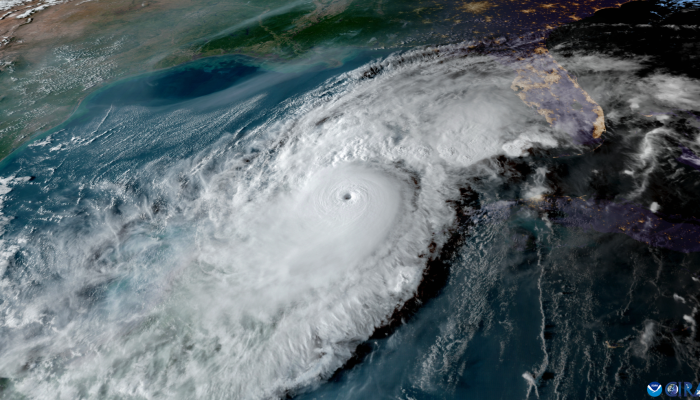The Atlantic hurricane season runs from June 1st through November 30th.
Over the past two years, Philadelphia and the surrounding region has experienced damage from hurricanes Isaias and Ida.
Every year, our office plans and prepares for powerful weather events that can harm our health and well-being, cause millions of dollars in damage, and disrupt our lives.
To help you be ready for hurricanes, tropical storms, and thunderstorms, we’re going to give you insight into how we prepare, react, and recover during the days surrounding the storm so you can too.
Year-round Preparedness
You need to be prepared before any storm occurs. This will help you avoid making critical, life-safety decisions as a hurricane approaches.
- Build your disaster supply kit while items remain on store shelves, including a three-day supply of water which is one gallon of water per person/pet daily.
- Develop a family emergency plan that includes the possibility of evacuation. You do not need to travel a great distance out of the area but plan several routes of where you’ll go and how you’ll get there. Don’t forget your pets!
- Find your flood risk rating through FEMA’s National Flood Insurance Program.
- Give yourself an insurance check-up. Flood insurance is NOT included in homeowners’ insurance and requires a 30-day waiting period.
- Make sure your valuables, electronics, and appliances are above the floor in your basement or lowest level of your home. You can use shelving units or plastic storage totes.
Five Days Out from a Hurricane
Through our Regional Integration Center (RIC), we are receiving reports from our partners at the National Weather Service Mount Holly, watching the storm’s forecasted track through the National Hurricane Center, and monitoring social media to see how the storm is progressing towards our area.
What you can do:
- Check your home emergency kit to make sure you have supplies.
- Stay connected to emergency information by enrolling for free ReadyPhiladelphia alerts. Get free texts by sending READYPHILA to 888-777 or visit our website to customize free text or email alerts, including river flood-stage warnings.
Three Days out from a Hurricane
Our office is updating forecast reports along with holding meeting(s) with key city departments and partners to discuss the forecast, hazards associated with the storm, and possible impacts. We’re also sending free text alerts to ReadyPhiladelphia enrollees with important information from the National Weather Service or the city.
What you can do:
- Make plans to stay with a friend of family member away from the flood forecast area if necessary.
- Prepare backup medical equipment and make sure you have enough medical prescriptions to last at least three days.
- If you live near a waterway or flood-prone area, including below ground garages or an underpass, find a location to park your vehicle so it does not become damaged.
- Know your emergency alerts.
- The National Emergency Alert System (EAS) allows government authorities, including our office, to break into radio or television broadcasts with critical information.
- A Wireless Emergency Alert (WEA) can be sent to all cell phone users within a specific geographic area to warn you of a dangerous situation. You can choose to receive alerts in Spanish if you choose to do so by selecting that option on your phone.
- ReadyPhiladelphia is the city’s free mass notification system. You must choose to be enrolled in this program.
- Know your terms.
- You will hear and see different terminology in the news and your social media feed. The National Weather Service will issue information as the storm gets closer and hazards along with a potential impact zone are more evident. A Watch means that impacts are possible while a Warning means impacts are imminent or happening. Different hazards require you to respond differently.
Storm Approach and Arrival
Communication and actions with partners intensifies along with the storm. Our office checks with the needs and concerns departments and organizations may have. Our Logistics program prepares to open shelters in areas where there may be a need for residents to seek a safe location. Our office opens the city’s Emergency Operations Center to bring partners together to facilitate real-time decision making, set objectives, and form a common operational response. We also publish important public information through the media, our social media pages, and to ReadyPhiladelphia.
What you can do:
- If you live near a waterway, you can follow flooding forecast on the National Weather Service’s Hydraulic Predication map.
- Move your car to safe location.
- Ensure you have electronic devices charging. Know how to report outages to PECO.
- Be prepared to shelter-in-place or evacuate your residence by having an emergency kit or go-bag ready.
- Secure doors and any loose items outside like chairs or lawn decorations
Storm Pass and Recovery
Our office evaluates damage done by the storm, including flooding, property damage, power outages, and other impacts caused by the storm. We will begin working with city, state, and federal partners to gauge what services and assistance may be needed.
What you can do:
- If you sustained damage to your property, our office may ask you to fill out a damage tracker so we can get the best understanding of what neighborhoods were impacted and what aid we can pursue.
- Before you start cleaning up, document your damage so you can work with your insurance agency.
- Safely clean up after a disaster.




